Whether you’re a reader or a listener, we’ve got you covered! Listen to the podcast version of this post for a fresh take.
As brands increasingly compete for attention, delivering immersive experiences has become essential. At Bluetext, we believe Augmented Reality (AR) and Virtual Reality (VR) offer untapped potential for transforming video content into interactive, engaging experiences. Let’s explore how incorporating AR and VR into your video strategy can captivate your audience and drive meaningful engagement.
Why AR and VR?
Both AR and VR bring depth and interactivity to traditional video formats. AR overlays digital elements onto the real world, allowing users to experience enhanced realities through their mobile devices or smart glasses. VR, on the other hand, transports viewers into entirely new environments using headsets, creating fully immersive experiences. By combining these technologies with video content, brands can engage customers on a deeper level, offering them an experience they won’t forget.
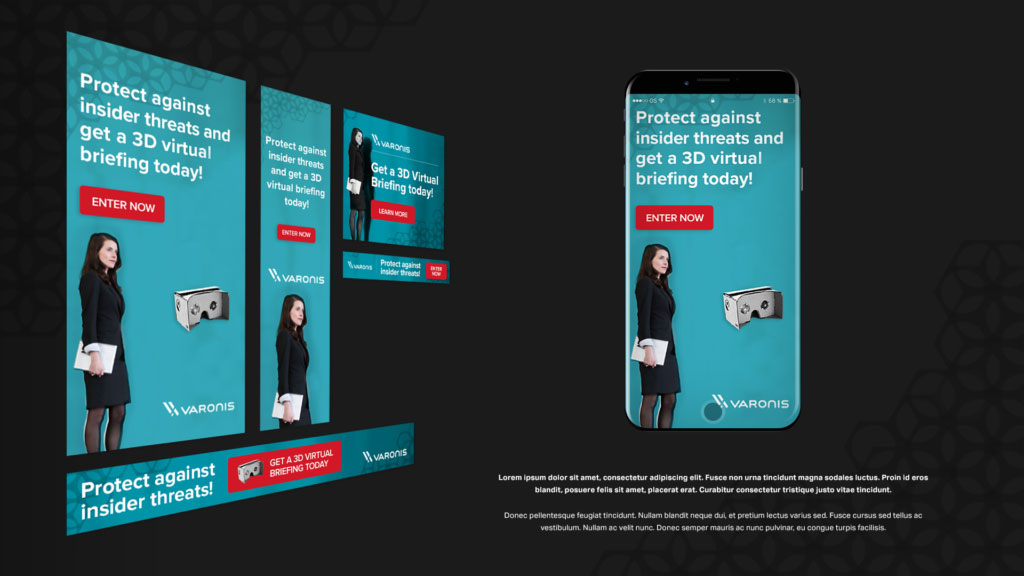
1. AR in Video Content: Layered Engagement
Integrating AR into video content allows for a layered experience. Imagine viewers scanning a video with their smartphone and accessing additional product details, 3D models, or virtual try-ons. This technology enables personalized and interactive customer journeys, which can significantly increase engagement and conversion rates. For example, a retail brand could showcase a video of a new product line, while AR allows users to visualize the items in their own space, bringing an added sense of practicality and excitement to the viewing experience.
2. VR in Video: Full Immersion
VR, while requiring more specialized equipment, offers a fully immersive environment that can revolutionize customer experiences. This technology is particularly effective in industries like real estate, travel, and entertainment, where the ability to transport viewers into another location or scenario can influence purchasing decisions. Imagine walking through a luxury hotel suite or exploring a new car model without leaving your home. VR allows your audience to interact with your product in an unparalleled way, turning passive viewing into an active experience.
3. Best Practices for AR and VR Integration
- Understand Your Audience: Not all customers are ready for AR or VR experiences, so it’s crucial to gauge their tech savviness before implementation.
- Focus on Storytelling: AR and VR should complement your narrative, not overshadow it. The content must remain engaging and relevant to your audience.
- Optimize for Platforms: Ensure that your AR and VR content is optimized for the platforms your audience uses most, such as mobile devices or VR headsets.
- User Experience First: Don’t overload users with too many interactive elements. The goal is to enhance the experience, not complicate it.
The Bottom Line
The future of video content lies in creating immersive and engaging experiences that go beyond the traditional screen. AR and VR provide the perfect tools to do just that. By incorporating these technologies, brands can deliver innovative, memorable content that resonates with their audience and drives higher levels of engagement. At Bluetext, we specialize in helping companies leverage cutting-edge technologies like AR and VR to enhance their video strategies and create unforgettable customer experiences.
Since late last year, the technology industry has been alight with news and developments surrounding the Metaverse. Companies large and small are betting big on what is seen by many as the successor to the internet. Microsoft’s record-breaking acquisition of Activision Blizzard has been seen by many as a Metaverse play. The likes of Facebook have even restructured their entire organization and established a new parent company, Meta, named after the Metaverse.

But what exactly is the Metaverse? In simplest terms, “The ‘metaverse’ is a set of virtual spaces where you can create and explore with other people who aren’t in the same physical space as you.” If you’re still confused, that’s okay. The Metaverse is constantly evolving as more and more companies invest in the concept. Chances are you’ve already experienced flavors of the metaverse but may not have even realized it. To break it down, major players in the technology industry are looking at the Metaverse from a capabilities perspective for the likes of:
- Real-time 3D graphics
- Feature sets that overlap with real-world activities
- Personalized avatars unique to each user
- Person-to-person social interactions that are less competitive in nature and more goal-oriented compared to stereotypical games
- Designs best well-suited to virtual and augmented reality headsets
- Links with outside economic systems so people can profit from virtual goods
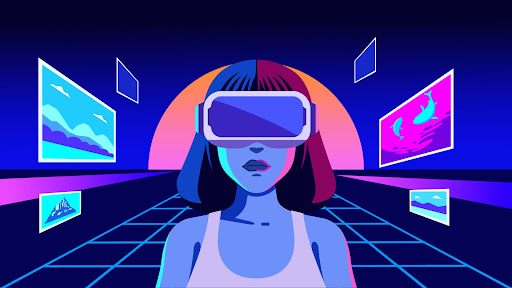
Regardless of how you feel about the Metaverse and its capabilities, there’s no denying that AR/VR is growing more popular. In 2021, it was estimated that approximately 85 million users experienced AR or VR at least once a month. Virtual reality headsets, which were originally intended for gamers back in the 1990s, have picked up momentum in the past decade as companies are releasing sleek, futuristic consumer headsets and applications. That userbase will only continue to grow as VR/AR devices become more accessible from a cost and usability perspective. Given the fluidity of the concept of the Metaverse, the marketing opportunities are truly endless at the moment. Below, we take a look at just a smattering of ideas for marketing in this next generation of the internet.
1. Gamifying your Brand
As we’ve discussed before, gamification is the act of taking a process that already exists and applying game mechanics to make it more engaging. Given the current state of the Metaverse and its existing uses, gamifying a brand is the first natural step we’ll see companies take as they expand their reach into this additional marketing channel. We’re already seeing some companies dive headfirst into brand gamification in the Metaverse. To promote the new Nike React Flyknit running shoe, Nike created its own virtual world, called Reactland, allowing users to create avatars of themselves and then navigate through the game’s forests and rooftops while jogging (in real life) on a treadmill for three minutes.

2. Parallel Metaverse Marketing within Real-Life Marketing
Just as we create physical manifestations of digital marketing campaigns, marketers need to be ready to expand their focus to the Metaverse as a third component of any future campaign. Campaigns targeting millennials and Gen-Z’ers will comprise the majority of initial Metaverse marketing campaigns, as these audiences are the predisposed primary users of the platform. Experiential marketing will also be a major component of any Metaverse marketing campaign, offering branded installations and events that users can interact with, as opposed to just placing simple ads.
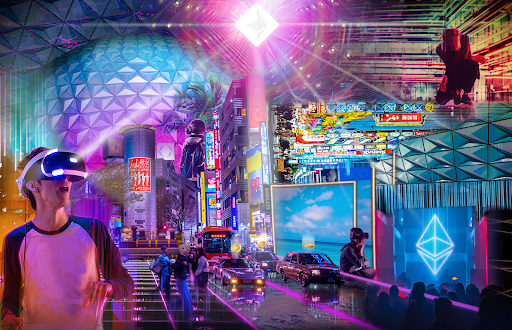
3. Harness the Power of Facebook’s Meta
While Facebook is still in the early stages of rolling out its Metaverse to consumers, there’s a good chance that any experience will include digital advertising and in-experience transactions. Anything from building virtual stores, hosting immersive events, or creating Facebook Ads will no doubt be considered. Additionally, we’ll definitely see comparable offerings from other companies staking their claims in the Metaverse hype such as Walmart and Microsoft.
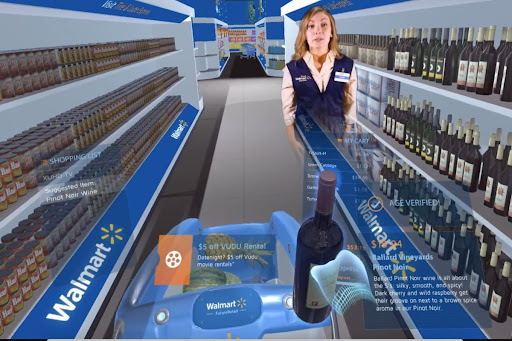
It’s fair to say that the Metaverse in its current state is filled with uncertainties. While many companies are pouring tons of capital into the space, no one knows what it will look like in five to ten years, let alone next year. That being said, it will be important for marketers to stay in the loop and decide when might be the best time to stake their own claim in the Metaverse. Interested to see how Bluetext is taking advantage of up-and-coming technologies on behalf of our clients? Contact us.
In a year when in-person events and meetings aren’t possible and Zoom-fatigue has set in, you need a way to virtually interact with your audiences in an engaging way. Here at Bluetext, we’ve spent a lot of time perfecting our digital experience platform to help you connect with your audience. Keep reading to learn more about our briefing centers.
Targeted Audience Experience
As with any experience, you’ll want to tailor it to your specific audience. Whether your goal is to disseminate thought leadership or acquire leads, your messaging and resources should support your goal. While it’s difficult to create a custom experience for each user, our Digital Briefing Center platform supports creating custom virtual experiences for different audiences. This empowers you with the option to create a one-size-fits-all experience or multiple tailored experiences.
While we understand many tailored experiences sounds great, that can easily turn into a lot of content creation and maintenance. That’s why we work with every client to provide experience-based recommendations for your Briefing Center. Ultimately, we recommend leveraging your existing content alongside some tailored content for your audiences. Bluetext has plenty of experience creating content, see some of our work here. As a full-service marketing agency, we will help you create a content marketing strategy to ensure your content is valuable, engaging, and worthwhile for your audience.
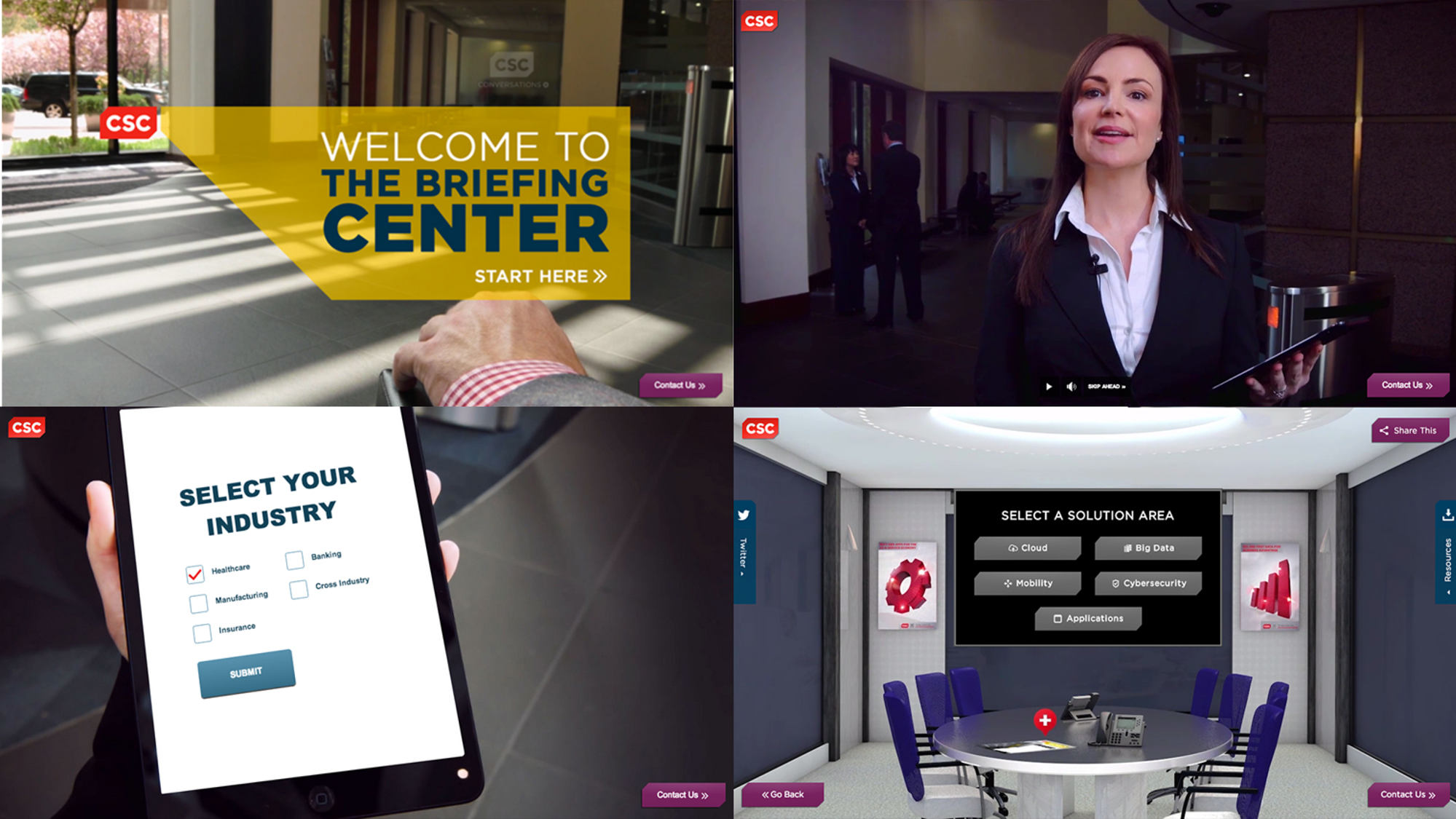
User-Approved Design
As with any virtual event, it’s about the experience for your audience. From inception to launch, we’ve worked with our in-house UX experts and our clients to come up with the best design with the end users in mind. That means regardless of the content you end up using, our design will help it shine and push users to convert.
As a user visiting a Briefing Center for the first time, you can expect a welcoming and straightforward design. Here at Bluetext, we prioritize user experience design and go the extra mile to emulate a live in-person experience. For example, what would a user expect at any traditional event? Perhaps to enter a conference center lobby and be directed with agendas and introductions. So why not replicate that across a digital platform? A streamlined user journey is something we provide in any virtual experience, website design, or platform. With the ability to gate the experience for new users, you can capture key contact information for your CRM. As a return user, bypass the gate to access the experience with ease.
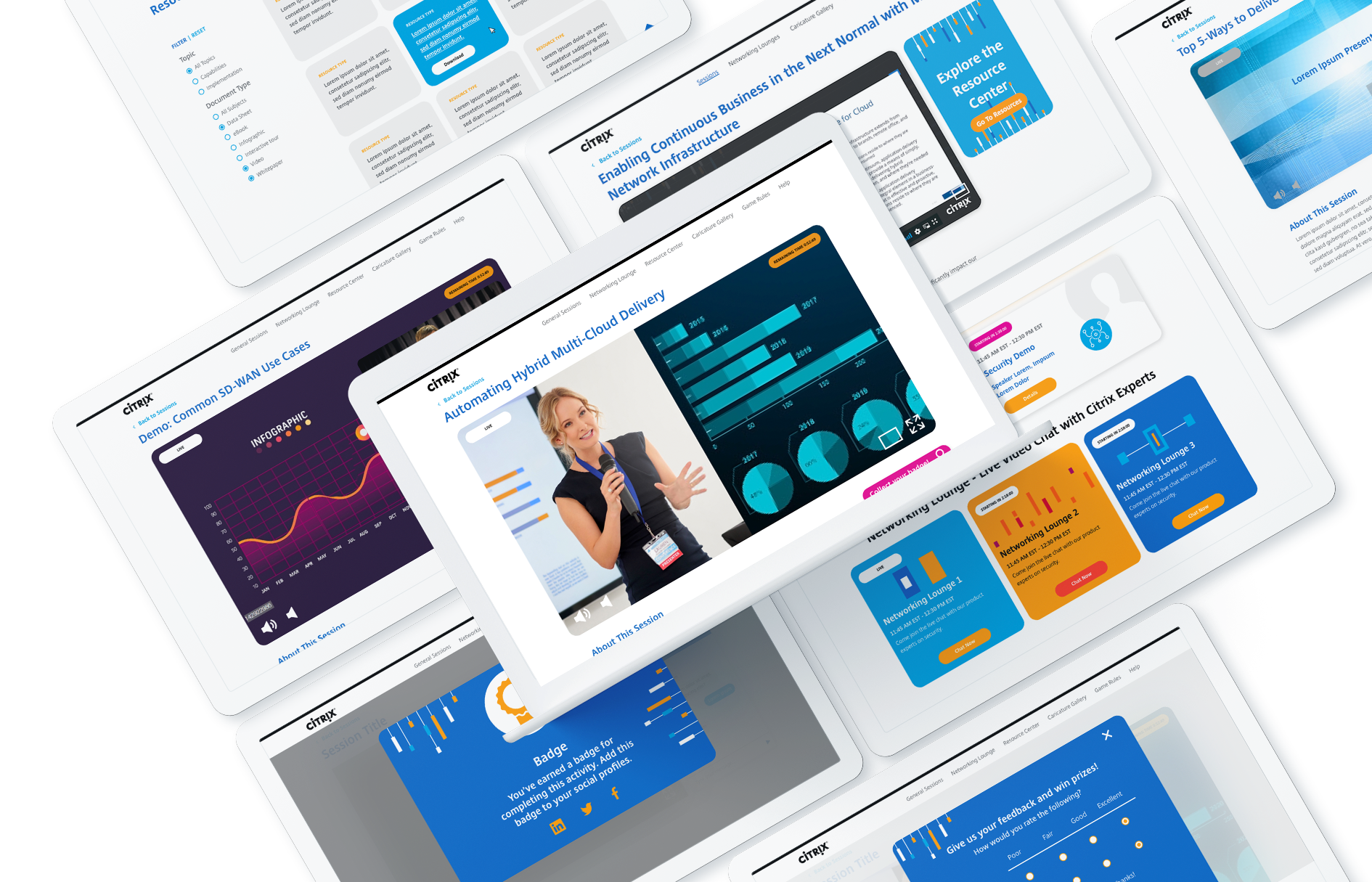
Connecting With Tailored Content
Every Digital Briefing Center uses tailored content specifically to meet your audience’s needs. From custom 3D environments to professionally recorded stakeholder briefings, your Briefing Center will convey key messaging in a personalized way. When you can’t meet your prospects in person, at least create the illusion of an in-person experience. Additionally, implementing live video and text chat capabilities can have your team on standby ready to talk with them.
Don’t let custom content intimidate you. Our team has mastered the remote video recording process. Using a comprehensive recording guide and video chats, we walk you through how to professionally capture any speakers you want to host in your experience.
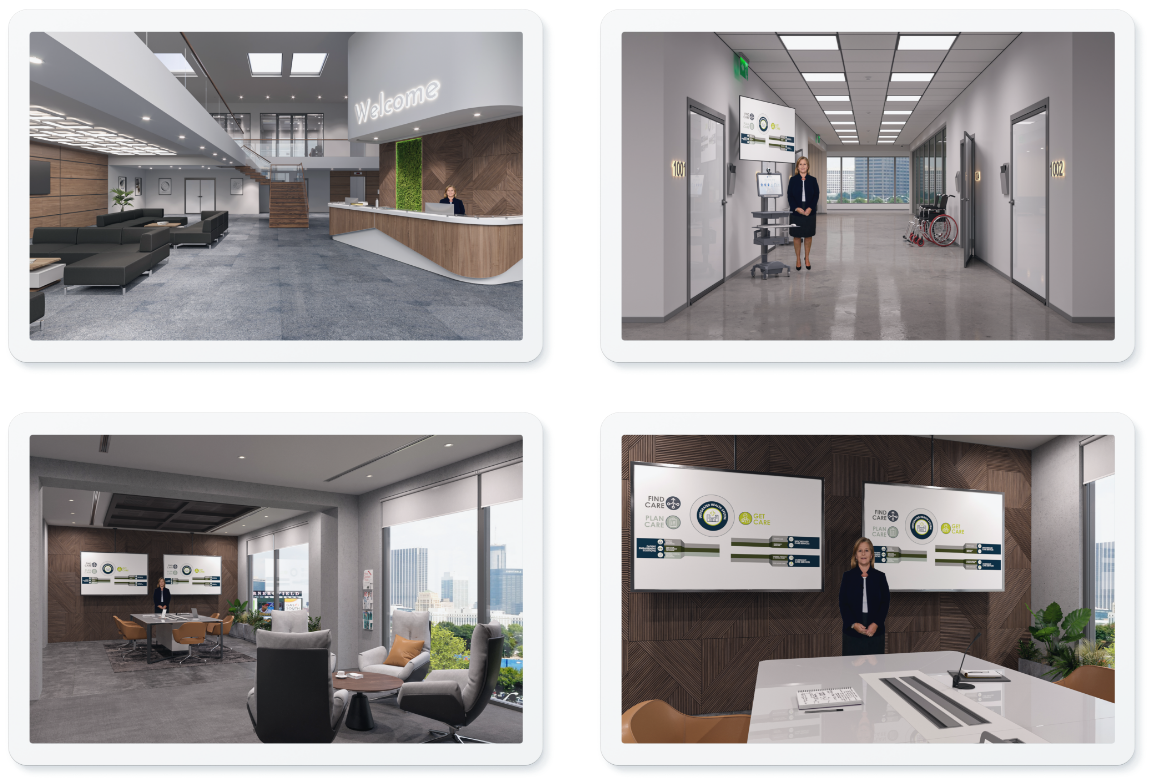
A Partner You Can Trust
So you’ve decided on creating your own digital experience. What comes next? Bluetext has the industry knowledge to guide you step-by-step from discovery to video capture to launch. Want to learn more? Watch our video and contact us today to learn more.
With the start of the new decade, the digital marketing industry is abuzz with anticipation for 2020. Top interactive agencies are predicting big shifts in the upcoming year, in everything from engagement tactics to design and user experience. Bluetext, as one of Washington DC’s leading digital marketing agencies, has some 2020 predictions of our own.
In the upcoming year, trends in technology will alter and enhance how the world interacts with various media. Top interactive agencies are predicting massive growth in virtual reality digital marketing. The future will be filled with smart devices delivering increasingly insightful and interactive digital experiences. Recent innovations have allowed marketers to blend digital and physical realms to create an immersive world. Technology will enable expanded connections between sets of people, businesses, devices, content and services.
A top technology trend of 2020 will be virtual reality (VR) and augmented reality (AR). Virtual reality refers to any type of experience that places the user “in” another world or dimension. Augmented reality is a term for essentially placing virtual content “into” the real world by way of, for instance, your camera on your iPhone or an app. The most popular example of this is Pokémon Go.
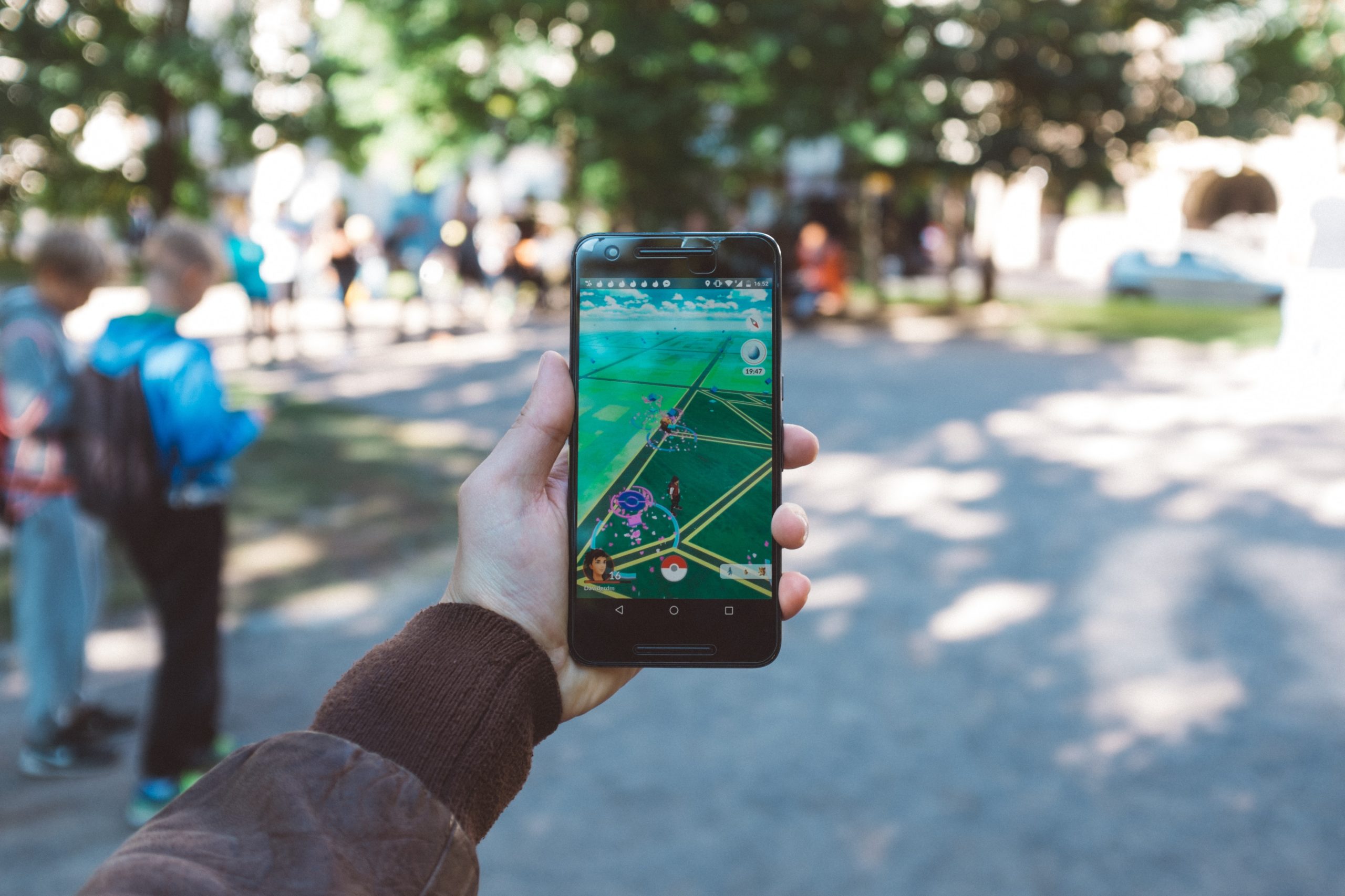
Top interactive agencies have been demonstrating the power of VR to change how users perceive the world and creating a truly immersive experience. Virtual reality production companies are expecting the next generation of VR to be able to sense shapes and track a user’s position and mixed reality (augmented and virtual) will enable consumers to view and interact with the world.
Virtual and augmented reality have been around for years, however, many companies were hesitant to adopt due to a poor user experience. Through recent tech improvements and growing expertise of user experience & interface companies, such as Bluetext, AR and VR are expected to grow quickly. In the next two years, Gartner predicts “70% of enterprises will be experimenting with immersive technologies for consumer and enterprise use.” Google cardboard glasses are a popular —and inexpensive—method to distribute the virtual reality digital marketing experience. 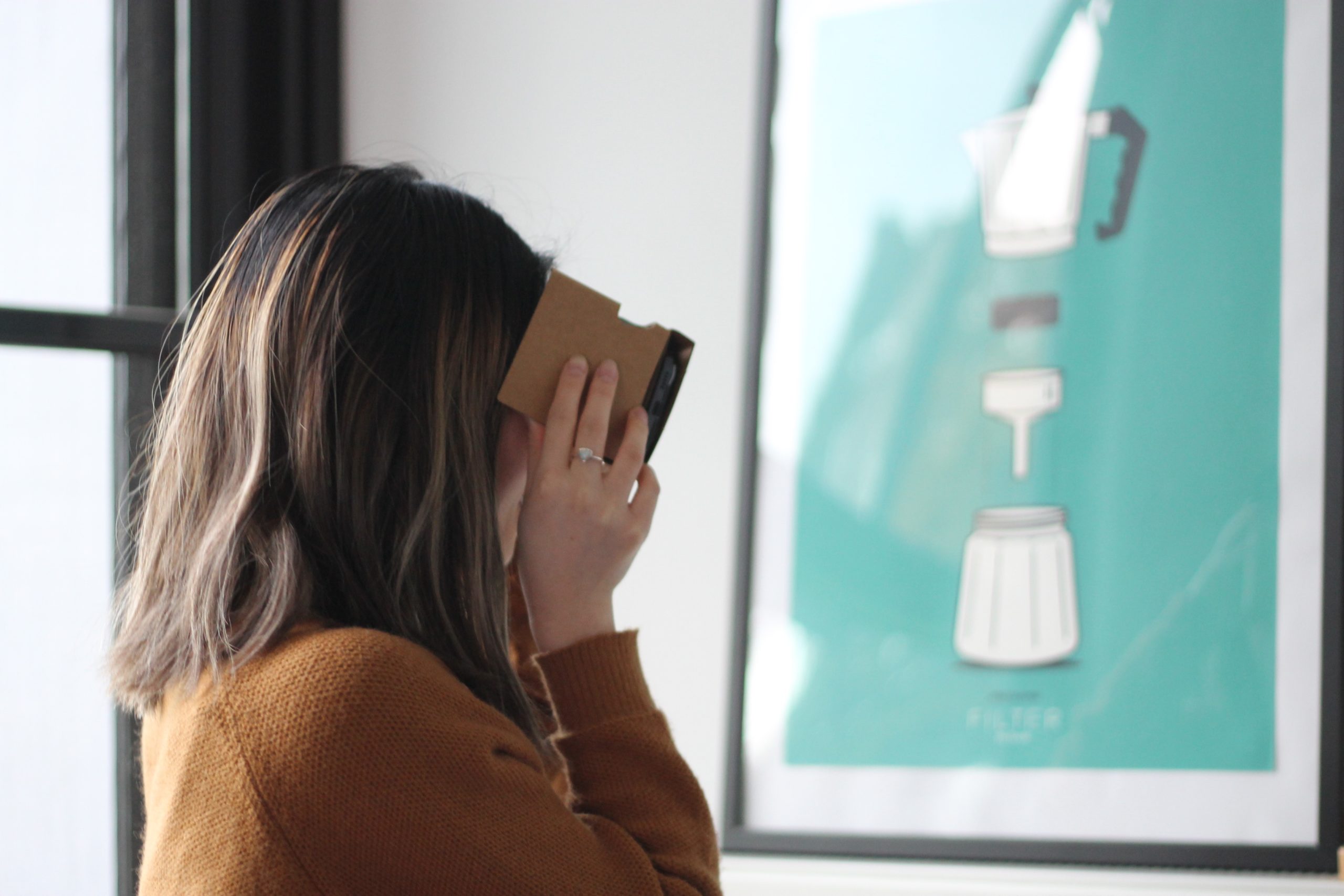
A number of companies have already deployed innovative AR and VR experiences, especially in the B2C realm. Companies such as Sephora and IKEA are using augmented reality to allow consumers to preview and test products. While AR and VR lend well to the “try before you buy” sales strategy with enticing previews to persuade a final purchase decision, it has also been used in campaigns to turn heads. Burger King unveiled an AR experience that quite literally burned away the competitor. The fast-food chain encouraged app users to scan competitors’ ads, which would activate an augmented reality experience. As the competitor’s ad combusted, it was replaced with a Burger King ad and directed to the nearest restaurant to claim a free Whopper.
Top virtual reality digital marketing experts will tell you this tech trend is sweeping a variety of industries as a method of differentiation. Especially in the B2B market, virtual reality has proven to be an incredibly powerful marketing tool to help close a sale and drive conversion. A virtual reality experience can go in-depth to product specs and prove exactly why it’s superior. When designed by a top virtual reality video production company the experience can be like a trade show, a sales demo, and a marketing presentation in one. Industries like cybersecurity or manufacturing can truly benefit from immersive experiences. When products are shown through virtual reality, the viewer can demo a complex product with ease. Top virtual reality video production companies also stress the importance of standing out in saturated markets and hectic trade shows.
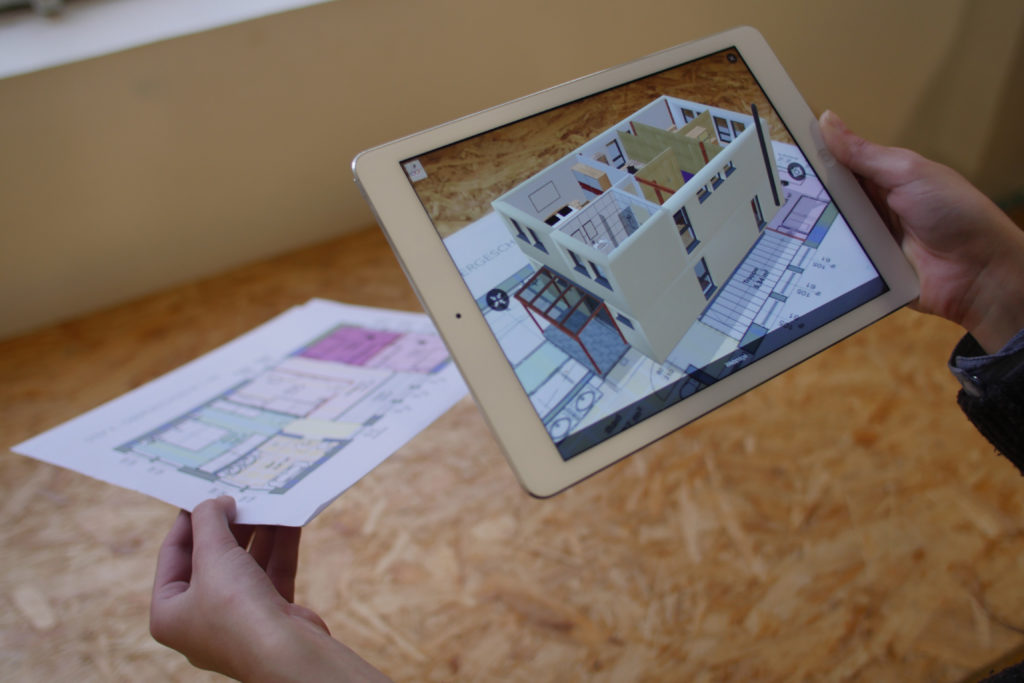
An effective and memorable AR or VR experience is an opportunity to capture physical attention and convert that to digital action. Interested in differentiating your company with next-generation digital tactics? Learn how Bluetext can bring your video and virtual reality ideas to life.
Bluetext’s Chief Creative Officer, Jason Siegel will be speaking at MediaPost OMMA VR/AR in New York during Advertising Week on September 28th.
MediaPost saw the need for an event focused solely on Augmented and Virtual Reality as these new mediums have taking the marketing world by storm. The event will explore how marketers can take Virtual and Augmented Reality from the novelty phase into an opportunity to enrich branding and deepen consumer relationships.
Jason will be part of a panel discussion titled “Retailers Follow Pokémon Go”, which will examine the overwhelming success and influence of Pokémon Go, and how retailers can learn from this case study and incorporate AR or VR experiences into their marketing strategy to appeal to in-store shoppers.
Other topics the event will cover include:
- How different types of VR/AR experiences map against specific brand goals.
- Where do you start…small?
- How to distribute experiences efficiently and connect VR/AR campaigns to other marketing platforms and programs.
- Who are the players and how should marketers and agencies vet them?
- Storytelling in 360 degrees
Make sure to tune in for the conference live-stream on September 28th at 4:00pm EST here. And to learn more about Bluetext’s VR work, contact us today:
MediaPost, the largest and most influential media, marketing and advertising site on the net, featured Bluetext’s work with cybersecurity client Varonis to create a virtual reality marketing campaign for EMC World 2016. Our Partner and Chief Creative Officer Jason Siegel shared the ways that virtual reality can advance B2B marketing goals, engage new customers and help clients stand out from the crowd. Here is an excerpt from the article:
Let’s talk B-to-B.
But not boring! Virtual reality is working out in surprisingly interesting ways for Bluetext, a digital marketing firm based in Washington, D.C. Although its business has lots of of well-known clients with more conventional campaigns, Bluetext is creating a niche for itself producing 360-degree videos for some customers.
Varonis Systems, supplier of a software platform that lets companies structure their data and detect leaks in the organization, has a complicated business supplying security for IT systems.
VR, it turns out, does a good job of providing complex information. And because of the VR aspect, at least at this early stage of the game, B-to-B 360-degree videos can get gawking attention from client-customers.
So Bluetext created an intricate multilayer 360-degree video, which the company provides to would-be clients. The Varonis “digital briefcase session” lets viewers veer off on these virtual tours. A company’s chief tech officer can go off in that direction, while the HR exec aims his goggles in another direction. (You can imagine the conference room scene.)
This is probably the least important part, but I love it. Varonis took its VR exhibit to the crowded, noisy EMC World show floor in Las Vegas, and at that crucial tech show, it captured a very distractible bunch of floorwalkers by handing out headsets — branded with the corporate logo. Then they hustled them into the booth to watch the briefing.
Varonis increased its traffic six fold with all those customers watching video. (Varonis also offers a VR app at Google and Apple stores.)
“If you think of those shows like those fighting for attention with their noisy 10 by 10 booths, you can see the advantage of just giving them a Cardboard and letting them watch,” says Bluetext founder Jason Siegel…
Siegel points out, excitedly, “There is research that shows sales increase the more senses are involved,” and spherical video has at least three–hearing, seeing and feeling. That’s one more than everybody else.
Here’s the full article.
To learn more about how Bluetext is leading in VR, reach out today:
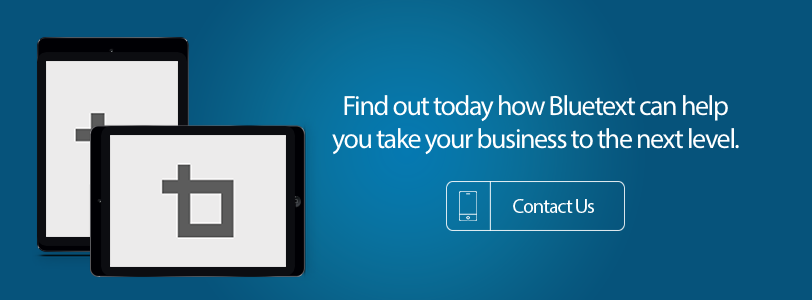
Last week I was fortunate enough to be invited by BizBash to speak at their DC event entitled “ELEVATE”.
Elevate is a one-day conference where event and meeting professionals are able to rethink and explore the new attendee journey at events. Featuring in-depth workshops on event marketing, technology, design, sponsorships, and other topics, they discovered innovative ideas and compelling insights from the most influential names in events.
As BizBash.com describes it, “Social media has become a key component in all aspects of business, especially live experiences. Understanding new, emerging platforms and how social media and event marketing strategies merge is an integral part of the event marketing process. In this session, Jason Siegel, founding partner of Bluetext, will discuss how to develop a three-part campaign style approach to social media to maximize event reach. Siegel will share new ways to create urgency to register, how to leverage website personalization, insights on interpreting engagement, and how to seamlessly integrate virtual reality to drive interest and registrations for events.”.
The energy and buzz in the Reagan Center was very strong, and it was great to get out and meet a lot of top marketers in the field of event marketing, virtual reality, and all kinds of experiential elements. Please enjoy the presentation I gave below.
It’s been an exciting summer here at Bluetext, and to top it all off, our Chief Creative Officer Jason Siegel is speaking at BizBash’s Elevate DC 2016 on August 3rd about his ideas and insights on the many cool things happening in our office and the industry in general. Jason will head to the Reagan Center here in Washington on August 3rd to participate in this one-day conference for meeting and event professionals. Filled with engaging speakers from a variety of industries, Elevate DC promises to be a great time, and Bluetext is honored to participate.
Jason will speak about “The New Rules of Social Media and Event Marketing”, sharing the way that social media engagement and other innovative marketing strategies can help businesses drive interest and registration for events. Following up on Bluetext’s recent virtual reality campaign for Varonis, Jason will discuss how to seamlessly integrate VR into an event marketing strategy. He will also be exploring how to use a three-part, campaign-style approach to maximizing event reach and creating urgency to register.
To see Jason’s presentation and the many other great speakers coming to Elevate DC this year, you can register here. And to learn more about how Bluetext is on the cutting of VR, reach out today:

If Dunkin’ Donuts plasters ads on the inside of city buses, it is because they believe riders exposed to the brand – over time – will be more inclined to stop for coffee and a donut at DD rather than at Starbucks, McDonald’s, Krispy Kreme, what have you. Or even that a consumer getting on a bus not thinking about coffee or donuts will exit the bus with these items at the forefront of their consciousness.
If Dunkin’ Donuts continues with this line of thinking, they will ask themselves what else could persuade riders beyond “seeing” an ad of the brand logo and pictures of the products? Would riders be further compelled if they could “smell” the coffee or glazed donuts on the bus?
Over the past few months, we’ve been talking a lot about augmented reality marketing and virtual reality marketing – two important pieces of the sensory marketing puzzle. Effective marketing requires engaging all or many senses, however, so CMOs must identify the right multi-sensory mix to positively impact the target buyers (whether they are consumers or business users).
Sensory marketing and experiences have been around for decades and examples abound. Much of it comes down to the effects of a desensitized audience. A theme park visitor who first rides the tallest roller coaster in the world will have a thrilling experience, but what happens when the visitor rides the coaster a second, third or tenth time? So theme parks might try and activate other senses through smoke, sound, lights, etc. If you want to know where theme park attractions are headed by the way, Legoland’s new Ninjago 4-D attraction offers a hint as the first ride in North America that uses hand gestures in place of physical devices to control a ninja warrior battle. The attraction also adds sensory experiences such as heat, smoke and wind for the virtual journey.
In a recent article for Harvard Business Review, a pair of professors shared results from four studies they conducted on when sensory marketing works and when it doesn’t for brands. The studies focused on taking product brands consumers were familiar – Nokia and Apple phones – and adjusting the product and packaging to gauge impact on brand perception. Prior to showing research subjects the new phones and packaging, the researchers first determine that Apple was viewed as the “exciting” brand and Nokia the “sincere” brand. This was important, because according to the study, brand perception impacted the amount of leeway Apple and Nokia had to fundamentally alter the product, packaging, and promotional experience.
The bottom line, according to the authors, is that consumer preference can be altered by sensory marketing tactics, but how well the tactic works depends on the brand’s personality. Apple as an “exciting” brand may be able to get away with surprising consumers with unexpected sensory experiences without undoing positive brand perception, whereas Nokia may risk alienating loyal customers if radical changes run counter to its brand sincerity.
The researchers went on to conclude from the four studies that overall, individuals prefer sincere brands (hallmark, Ford, Coca-Cola) over exciting brands, “when the brand’s packaging or promotional accessories felt and looked the same, but they preferred exciting brands (Mountain Dew, BMW, Pepsi) when the brand’s packaging or promotional accessories did not feel and look the same.”
As sensory options for marketers extend from see and hear to smell, touch and immersion, a host of new opportunities open up for CMOs – opportunities that become risks if the CMO overlooks some key takeaways from these studies. Creating a virtual or augmented reality experience in and of itself will not necessarily turn off users of a sincere brand, but marketers must be mindful of risks if the experience itself does not stay true to sincerity of the brand. To learn more about the importance for VR marketing, reach out today:

Anyone familiar with The New Yorker Magazine may have noticed an interesting cover on the May 16 edition—a two-color drawing of a women stepping onto a subway car. It seems somewhat simple—not particularly eye-catching. But download an app called Uncovr (developed for The New Yorker), hold it over the magazine’s cover, and the image comes to life in your smart phone’s screen. Buildings grow off the page in 3-D form, music plays, city blocks rise up into the air, cars move around the streets. You can bring it in closer to zoom in among the buildings and see more detail, or bring it farther away for an overhead view. As long as you keep the screen anchored to the cover, an eye-popping video experience unfolds for the viewer.
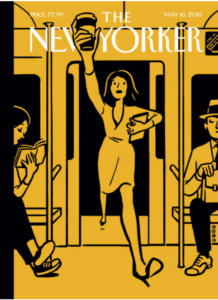
This is Augmented Reality at its best. This older cousin of Virtual Reality has paved the way for the more immersive VR technology experiences through a Google Cardboard or a more expensive set of VR goggles like Oculus Rift or the Samsung Gear.
Augmented Reality is a live view of the physical environment that is augmented by computer-generated visuals. Virtual Reality, by contrast, replaces the real world with a digitally created one. Yet for marketers, they can go hand-in-hand. We’re huge fans of VR for digital marketing, and have produced a number of high-end experiences that bring customers into a virtual demonstration using state-of-the-art cameras and video editing. But new and better ways of leveraging Augmented Reality can play well along side of a VR campaign.
For marketers, this can mean an engaging way to preview a Virtual Reality campaign that can scale to as large of an audience as needed. Where VR videos require a set of goggles, Augmented Reality only needs a still graphic to key off of and an easy app download.
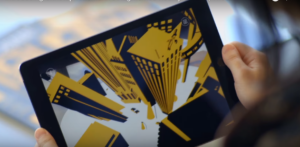
In The New Yorker’s example, the distribution model was simply the cover of the weekly publication. For CMOs at our enterprise clients, it can be a mailed postcard or one-pager, or it can be conveyed through a digital graphic via social media or an email. The image essentially serves as its own bar-code or QR code, bringing the experience to life. But rather than an obscure set of black bars and white spaces, the newer versions of Augmented Reality can anchor to a graphic representation that is part of the visual display, and leverages the motion-detecting software in the phone for changing viewing angles or for zooming in and out.
Augmented and Virtual Reality together deliver an amazing immersive experience that sets a marketing campaign far apart from the other noise in the market.
